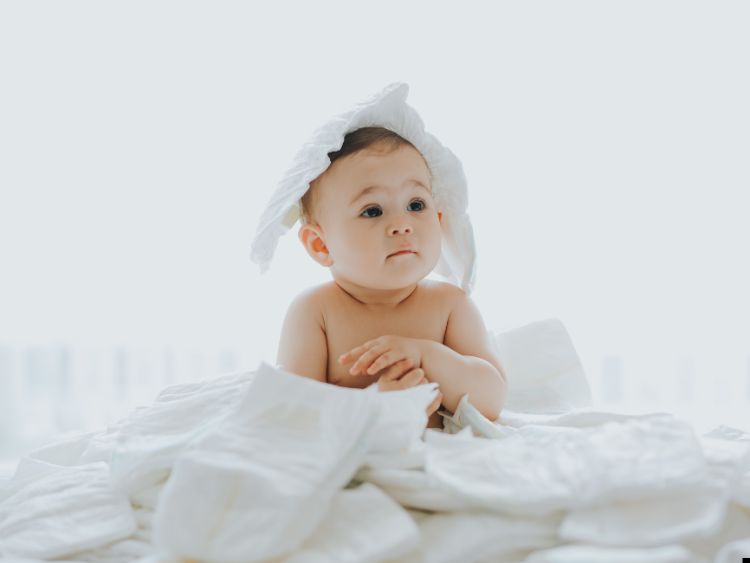Welcoming a newborn into the world is a beautiful experience, and as a parent, one of the most important decisions you’ll make is selecting the perfect baby crib. After all, your little one will spend a significant amount of time there, so it needs to be safe, comfortable, and functional. Whether you’re a first-time parent or adding to your growing family, understanding what makes a great baby crib can help ensure your child has a peaceful and secure sleep environment.
What is a Baby Crib, and Why is it Important?
A baby crib is a small bed designed specifically for infants and toddlers. It’s one of the most essential items in a nursery, providing a safe and comfortable space for your baby to sleep and rest. Cribs come in various styles, materials, and designs, so finding the right one for your baby can feel overwhelming. But don’t worry—this guide will walk you through everything you need to know about choosing the perfect crib.
Types of Baby Cribs
When shopping for a crib, you’ll find several different types. Here’s a breakdown of the most common options:
1. Standard Baby Cribs
Standard baby cribs are the most traditional option. They’re sturdy, stationary, and offer a simple design with no frills. If you’re looking for something reliable and durable, this is a great choice.
2. Convertible Cribs
A convertible baby crib can transition from a crib to a toddler bed and, in some cases, even into a full-size bed. This type of crib grows with your child, saving you money in the long run since you won’t need to buy multiple beds.
3. Portable Cribs
If space is an issue, a portable crib (also called a mini crib) may be just what you need. These are smaller than standard cribs and can be easily moved from room to room.
4. Travel Cribs
Designed for families on the go, travel cribs are lightweight and easy to set up and break down. They typically come with a carry bag for convenience. Though they’re not meant for everyday use, they’re ideal for vacations or visits to grandma’s house.
5. Bassinet Cribs
Bassinets are small and cozy, providing a snug sleeping area for newborns. They’re not designed for long-term use since babies outgrow them quickly, but they can be a convenient option during the first few months.
Key Features to Look for in a Baby Crib
Before you make your final decision, it’s important to consider some key factors to ensure your crib is safe, practical, and suitable for your baby.
1. Safety Standards
Your baby’s safety should be your top priority. Make sure the crib you choose meets all current safety standards set by the Juvenile Products Manufacturers Association (JPMA) or other regulatory bodies. Look for a crib with slats that are no more than 2 3/8 inches apart, and avoid any models with drop-side rails, as these have been banned due to safety risks.
2. Material and Durability
Baby cribs come in a variety of materials, including wood, metal, and plastic. Wooden cribs are the most popular because of their durability and classic look. Metal cribs offer a sleek, modern design, while plastic cribs tend to be more affordable but may not be as long-lasting.
3. Mattress Adjustability
Many cribs come with adjustable mattress heights. This feature allows you to raise the mattress when your baby is an infant, making it easier to reach them, and lower it as they grow and begin to stand. It’s an essential feature to keep your baby safe from climbing out as they get older.
4. Size and Space Considerations
The size of the crib matters, especially if you’re working with limited space. Measure the area where you plan to place the crib to ensure it fits comfortably. For smaller rooms, a mini or portable crib may be the best option.
5. Design and Aesthetics
While safety and practicality are essential, you also want a crib that matches your nursery’s design. Whether you prefer a modern, minimalist look or a traditional, ornate style, there are plenty of options to suit your taste.
Top Tips for Maintaining Your Baby Crib
Taking care of your crib ensures that it stays in good condition for years to come, especially if you plan to use it for multiple children.
- Clean Regularly: Wipe down the crib’s surfaces with a damp cloth to remove dust and debris.
- Check Hardware: Periodically inspect the crib’s hardware, including screws and bolts, to ensure everything remains secure and tight.
- Mattress Care: Rotate the crib mattress every few months to prevent wear and sagging.
Baby Crib Safety Tips
Ensuring your baby’s crib is safe goes beyond just purchasing a model that meets safety standards. Here are a few extra tips to keep your little one safe during sleep:
- Bare is Best: Avoid placing pillows, stuffed animals, or blankets in the crib, as these can pose suffocation risks.
- Use a Firm Mattress: A firm mattress is recommended to reduce the risk of Sudden Infant Death Syndrome (SIDS).
- Positioning: Always place your baby on their back to sleep, as this is the safest position for reducing SIDS risks.
FAQs about Baby Cribs
1. How long can my baby use a crib?
Most babies can use a crib until they’re about 3 years old or when they start climbing out. Convertible cribs, however, allow for continued use as they transition into toddler beds.
2. Can I use a second-hand crib?
It’s generally safe to use a second-hand crib, but ensure it meets current safety standards and doesn’t have any recalls. Avoid older models with drop-side rails or missing hardware.
3. How often should I adjust the crib mattress height?
You should lower the mattress as your baby becomes more mobile, especially when they start sitting up or standing.
4. What’s the best mattress for a baby crib?
A firm mattress that fits snugly inside the crib is best. It should not have gaps between the mattress and the crib walls.
5. Should I buy a crib with wheels?
Cribs with wheels can be convenient if you plan on moving the crib frequently. Just make sure the wheels lock securely to prevent any accidents.
Conclusion: Finding the Perfect Baby Crib for Your Little One
Choosing the right baby crib can feel like a big decision, but with the right information and a bit of planning, you’ll find the perfect option that ensures your baby’s safety and comfort. Whether you opt for a standard crib, a convertible model, or a travel crib, the key is to focus on safety, durability, and practicality.
At the end of the day, your baby’s crib is more than just a place to sleep—it’s a space where they’ll grow, dream, and feel secure. So take your time, consider your options, and invest in a crib that meets all your needs.





